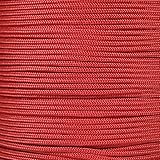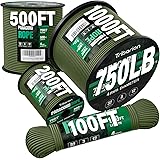The selection of appropriate tools for outdoor survival and small game hunting is a critical aspect of preparedness. As demonstrated in the accompanying video, the discussion centers on lightweight, compact firearms designed for reliability in demanding conditions. This analysis delves deeper into two prominent examples: the TPS Arms M6 Scout and the Little Badger .22 single-shot rifle. Each firearm is examined for its unique features, operational benefits, and potential drawbacks, providing a comprehensive guide for enthusiasts and survivalists alike. The overarching principle for selection, as often emphasized, is aligning the tool with one’s specific intent and anticipated scenarios in the field. Careful consideration of these elements ensures optimal readiness.
The TPS Arms M6 Scout: A Dual-Caliber Survival Rifle
The TPS Arms M6 Scout rifle is recognized for its dual-caliber versatility. It has long been a staple for those seeking a compact, multi-purpose survival firearm. This takedown rifle design allows for easy portability. It can be broken in half or folded, fitting conveniently into a backpack.
Operational Mechanics and Caliber Configuration
An over/under barrel configuration is featured on the M6 Scout. A .22 Long Rifle barrel is positioned on top. A .410 shotgun barrel is located underneath. This combination offers adaptability for various situations. The hammer mechanism is straightforward. Its position indicates the barrel ready for firing. Lifting a lever allows for loading and unloading of ammunition. The barrel drops down, exposing the chambers.
Ammunition Storage and Ergonomics
Integrated ammunition storage is a key design element. The buttstock contains two compartments. These hold .22 rounds and .410 shells. This accessibility is advantageous in survival scenarios. The firearm’s unloaded weight is approximately 4 pounds. It becomes about 4.5 to 5 pounds when loaded and equipped with a sling. Such weight is generally considered manageable for field use. It is often lighter than traditional shotguns.
Sighting Systems and Trigger Mechanism
The M6 Scout’s sighting system includes a rear sight that flips. This adjustment shifts between the .22 and .410 barrels. Lateral windage adjustments are not incorporated. This requires users to employ ‘Kentucky windage’ techniques. Practical experience with the rifle helps in mastering this skill. The front sight post is triangular. Its design aids in aiming. The tip to the middle section aligns with the top barrel. The middle to the bottom section aligns with the bottom barrel. Understanding this subtle distinction is crucial for accuracy.
The trigger mechanism has been a point of discussion. It features a small nub that is pressed to fire. This design can be challenging for some users. Precise finger placement and a gentle squeeze are often required. Any slight lateral movement can affect shot placement. This unique trigger dates back to its origins as a pilot’s survival weapon during the Vietnam era. The intent was to provide pilots with a compact, self-feeding firearm if downed behind enemy lines.
Performance and Market Value
The M6 Scout is proficient for small game hunting. Rabbits, squirrels, and possums are suitable targets for the .22. The .410 shotgun offers broader utility. It can be used for larger game such as deer or coyote in a survival context. Used models typically range from $450. New firearms can command prices between $650 and $700. Despite its unique trigger and fixed sights, its dual-caliber capability makes it a strong contender for a survival rifle.
The Little Badger: A Lightweight .22 Single Shot
The Little Badger represents another philosophy in survival firearms. It emphasizes extreme lightweight design and simplicity. This single-shot .22 rifle is remarkably compact. It is an ideal choice for ultralight hikers and minimalists.
Design and Portability
The rifle is designed for easy breakdown. It folds down significantly for transport. This contributes to its minimal footprint. An unloaded weight of approximately 1.3 pounds is achieved. This increases to about 1.5 pounds when loaded. This makes it one of the lightest survival firearms available. Its wire buttstock contributes substantially to weight reduction. It provides a sturdy, albeit minimalist, shoulder rest.
Ammunition Storage and Safety Features
Ammunition is stored in the buttstock. It holds 12 rounds of .22 ammunition. With one round in the chamber, a total of 13 rounds can be carried. While effective, the rounds in storage can shift. This is a minor consideration for some users. An actual trigger mechanism is present on the Little Badger. This offers a more familiar and controllable shooting experience. Unlike some designs, there is no separate safety switch. The hammer serves as the primary safety mechanism. The rifle will not fire unless the hammer is cocked.
Sighting and Ergonomics
The Little Badger features an M1-style rear sight. This sight unit is made of plastic. It is adjustable for elevation and windage. This allows for precise zeroing of the rifle. Markings are present for distances from 100 to 350 yards. A thin, stationary front sight post is included. This provides ample target visibility when aiming. The ability to mount a scope is also available. Screws allow for the removal of components. This facilitates scope attachment if desired.
The loading and unloading mechanism is simple. A secondary trigger is pulled to break the action open. The barrel hangs open, allowing for cartridge insertion. When the barrel is fully pressed down, rounds are ejected. The chamber closes securely once loaded. This ensures no gap exists when the rifle is ready to fire.
Practical Applications and Cost
The Little Badger is exceptionally accurate at typical small game distances. It performs well at ranges up to 20-50 yards. It is perfectly suited for hunting squirrels, rabbits, and other small game. These rifles are often priced around $216 new. Used models can be found for as low as $150. This makes it a highly accessible option for a dedicated survival firearm. Its combination of low weight, accuracy, and affordability makes it a compelling choice.
Considering Intent: Choosing the Right Survival Rifle
The decision between the M6 Scout and the Little Badger hinges on personal intent. What are the specific objectives for the survival rifle? This question guides the selection process. Both are excellent firearms. Their utilities vary based on expected scenarios.
Scenario-Based Selection
If primary intent is pure small game harvesting, the Little Badger excels. Its light weight is a significant advantage. Its accuracy with .22 rounds makes it ideal for precision shots on small targets. It is suitable for those planning extended treks. Every ounce matters in such expeditions. The rifle’s simple operation is also a plus.
Conversely, the M6 Scout is considered when broader versatility is desired. Its dual-caliber setup offers more options. The .22 is still perfect for small game. However, the .410 shotgun barrel adds capability. It can address larger game or provide defense. This makes it a stronger choice for general survival preparedness. It is useful in situations where a wider range of threats or opportunities might arise. The ability to use different ammunition types provides flexibility. This adaptability is highly valued in unpredictable environments.
Balancing Weight, Versatility, and Cost
Weight is a key differentiator. The M6 Scout, at 4-5 pounds loaded, offers substantial capability. The Little Badger, at 1.5 pounds, prioritizes minimal load. For some, the extra weight of the M6 Scout is a reasonable trade-off. This is due to its expanded utility. For others, the Little Badger’s ultralight design is paramount. Cost also plays a role. The Little Badger is significantly more affordable. This can be an important factor for many individuals. The decision is ultimately a personal one. It must align with one’s anticipated survival and hunting needs. Both firearms represent viable choices for a dedicated survival rifle.
Your Full Belly Guarantee: Survival Tools Q&A
What is a survival rifle?
A survival rifle is a lightweight and compact firearm designed for reliability in demanding outdoor conditions, often used for small game hunting and preparedness.
What two specific survival rifles are compared in this article?
The article compares two survival rifles: the TPS Arms M6 Scout and the Little Badger .22 single-shot rifle.
What is the main advantage of the TPS Arms M6 Scout?
The main advantage of the TPS Arms M6 Scout is its dual-caliber versatility, featuring both a .22 Long Rifle barrel and a .410 shotgun barrel for different situations.
What is the main advantage of the Little Badger .22?
The Little Badger .22 is known for its extremely lightweight design and simplicity, weighing only about 1.3 pounds unloaded, making it ideal for ultralight hikers.
How should I choose between the M6 Scout and the Little Badger?
Your choice depends on your specific needs; the Little Badger is best for lightweight small game hunting, while the M6 Scout offers broader versatility with its dual-caliber system for various situations.











